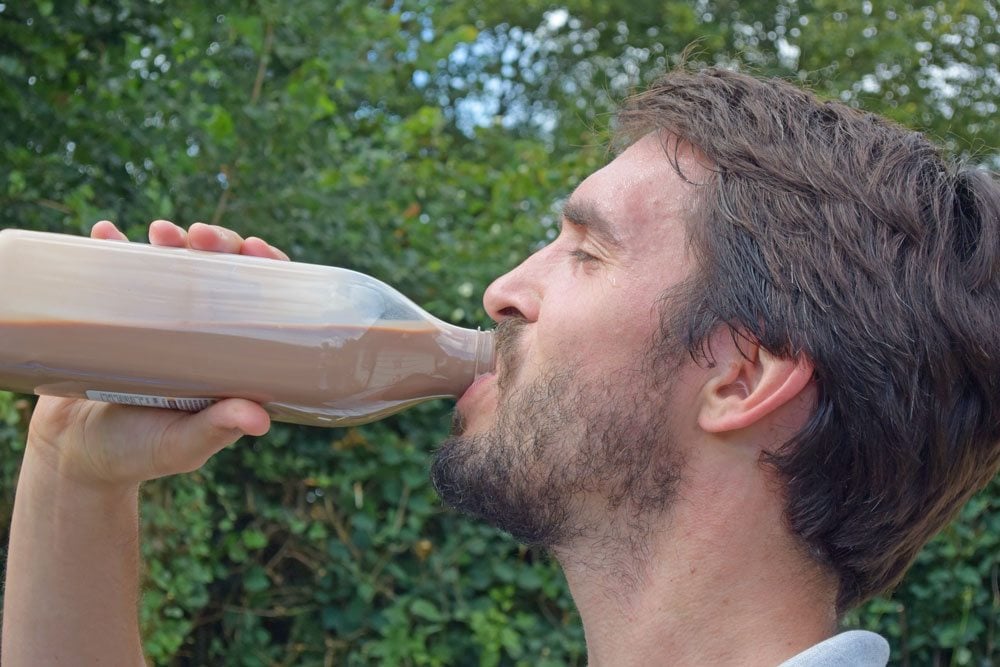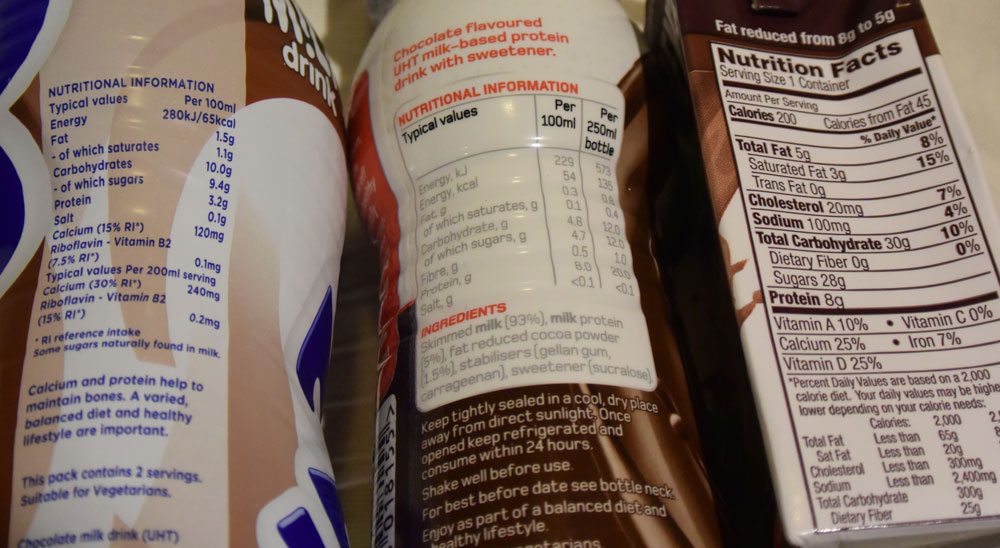“I’m shaking under the bright lights. Sweat is pouring off me. My clumsy fingers fumble with the cellophane, tugging at the packaging, trying not to drop it but get it out and stab the box. In it goes and I take a long pull through the straw. Blessed relief as the sweet chocolate milk begins its journey through my exhausted body. It’s the end of two hours of intense training. You know what it feels like – squats, patterns, combinations, leg lifts, press-ups, patterns, two-person combinations, stance work watching the mirror to make sure your head isn’t higher than the person in front (why are the front row so short?). And at the end of it all (well, just before weapons and sparring get underway) I allow myself a carton of chocolate milk.” Instructor Sharon Ngo is here to tell you all about the latest in fitness addictions.
“As middle age whizzes by I have changed my training load to make the most of my remaining muscle-building years. But the pain of training does not diminish with age. When I was in my twenties I had it – in my thirties, I had it – in my forties well, you get the picture. After a couple of pretty rough days with the long-familiar DOMS (Delayed Onset Muscle Soreness) sitting on the sofa reading sports books I came across a mention of chocolate milk as a recovery aid.
Sounds too good to be true – and indeed it is!
Personally, it has made a massive difference to my recovery. I can still feel the effects of the training, the muscles may be whingeing away but the paralyzing pain is gone. I don’t have to walk down stairs like the Tin Man with squeaky knees, I can squat down to train the dog, I can even laugh at jokes without my abs telling me to go back to being grumpy.
And I’m not alone. It has taken some time, but most of the Club’s Instructors are also now using chocolate milk as a post-training recovery aid. As there is a competition in China later this year, they are all gearing up their patterns to be the ultimate expressions of power with grace. And the power comes from those legs. And those legs have big muscles that moan and groan under the pressure.
Isn’t this just another one of those training fads that comes and goes?
There is increasing interest in how the chocolate milk “miracle” works. The main effect is to reduce post-exercise pain (the DOMS mentioned earlier). And pain is personal so “scientific” measures of pain come down to athletes’ subjective reporting of pain. But whilst scientists might like to sit around coming up with objective measures of pain, I know pain when I feel it (as do you no doubt). And if any scientists wanted to ask me I would say that my level of post-training pain is life-changingly less if I drink chocolate milk immediately after class.
There must be some science behind the chocolate milk miracle by now…
Well, early findings indicate that the combination of milk proteins, sugar (also known as carbs – who knew?) and fluid allows muscles in the post-exercise, glycogen-depleted state to quickly restore their glycogen stores to pre-exercise levels. Somehow this reduces post-exercise pain. Given that there is currently no scientific consensus on the mechanisms that cause DOMS, it is not surprising that the chocolate milk effect similarly is unexplained – the scientific community is coming back to us on that one. In the meantime I’m sure you can use your chosen search engine to turn up reports with titles like “ Cocoa-Based Protein and Carbohydrate Drink Decreases Perceived Soreness After Exhaustive Aerobic Exercise: A Pragmatic Preliminary Analysis” or the even more accessible, “Acute milk-based protein-CHO supplementation attenuates exercise-induced muscle damage”. And so on.
You know those 1 litre, Belgian Chocolate Thick Shakes with Extra Caramel and Unlimited Joy inside? I can drink one of those after every class? Yippee!!!
Sadly no. And it was all going so well. The original tests were done on the basis of 5kCal per kilo of body weight, as the principal point of interest was initially the role of carbohydrates in recovery. It then moved on to the interaction of the proteins and carbohydrates, specifically the milk protein (which was why soya milk did not seem to have the same effect). So I chose the drink I use on the basis of 60kg body weight with a target max of 300kCal. Most of the larger bottles of milk available have too much but my small carton gives me 200kCal. This is usually sufficient, but after particularly tough training sessions I have been known to take another one. As they are UHT and don’t need refrigeration I just keep a stack of them in the back of the car with the rest of the training stuff.
So what should we do?
The 5kCal per kilo of bodyweight is a useful starting point, but there are additional considerations. Sports nutritionists suggest that in a recovery drink the ratio of carbohydrates to proteins should be 4:1. So I had a look at the label, and the carton I drink has 28g of carbohydrates and 8g of protein, giving a ratio of 3.5:1. To my mind that’s not too far off. The milk should be 1% fat, and mine is 2% so a bit of room for improvement there. During my researches I came across a poster from Cornell University in the USA which sets out their optimum chocolate milk composition (for reference 1 cup is about 240ml). Their Co-Ordinator of Sports Nutrition, Clint Wattenberg, is a big fan of chocolate milk, and the University is working on a “scientific” version for the use of the College’s athletes. Most of the other Instructors are bigger than me and they tend to go for larger bottles consequently with more calorific content – for example Richard Wagstaff (seen at the top swigging from the bottle) weighs in at 75kg, so he goes for up to 400 kCal. And Danil Mikhailov currently weighing in at 98kg (though aiming for his fighting weight of 90kg) just stops when the bottle is empty.
Empty Calories?
There are plenty of nutritionists who would say that you don’t need the extra calories, and that the amount of sugar in chocolate milk is more than most people should consume. Well, I’m not arguing with that. But I don’t feel the pain the way I used to. I realise that I do have to factor in the extra 200 kCal into my daily intake of food. At home we eat a home-cooked diet based on variety and fresh ingredients. To the disgust of most visiting children (and some adults) we don’t have cake or biscuits or junk snacks in the cupboard. But we’re not angels or hardline “clean eaters” either. So I don’t worry about the sugar content in my post-recovery chocolate milk – I worry more about walking like Frankenstein for the two days after stance-work training.
Lactose intolerant?
There is lactose-free chocolate milk on the market, but I don’t know if it works for DOMS – there have been studies on lactose-free milk as a recovery drink amongst Asian athletes which implied that it did. If you try it let me know if it works for you.
Does it work for everyone?
Why should I care if it works for me? Because I’m a caring person, that’s why. During a recent fundraiser I gave out chocolate milk to those taking part. The fundraiser required trying the Sunday Instructors’ Class – notoriously tough and definitely requires recovery. They gave me their feedback, but I’ll leave that for another article as this one is all about me. So come back and I’ll go through what they had to say with more ideas on how to make your post-training recovery more effective.”

